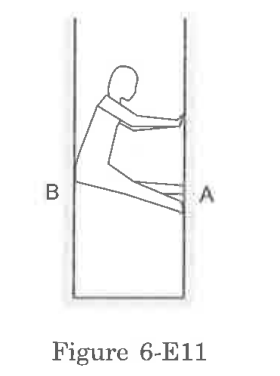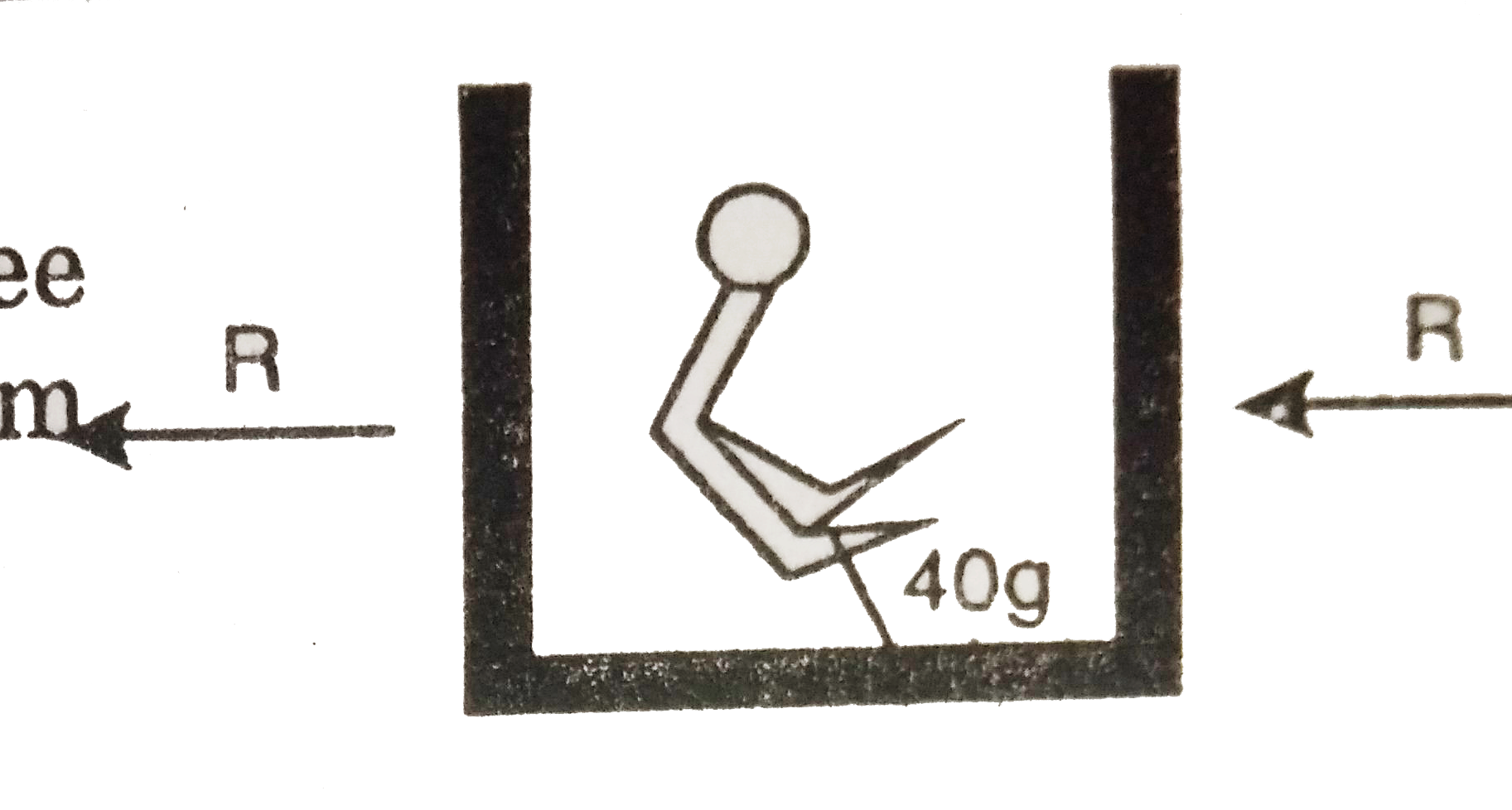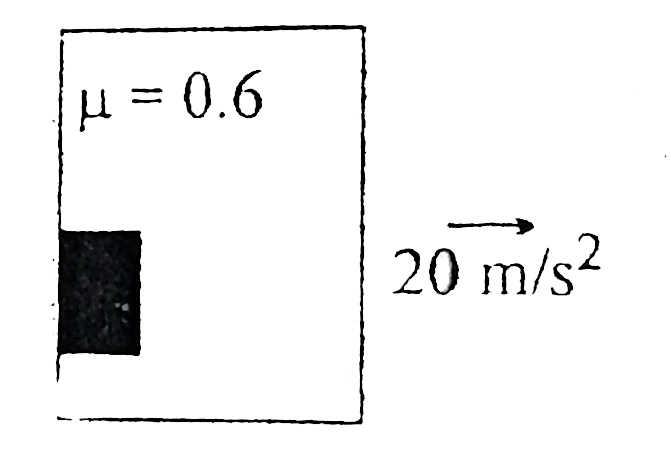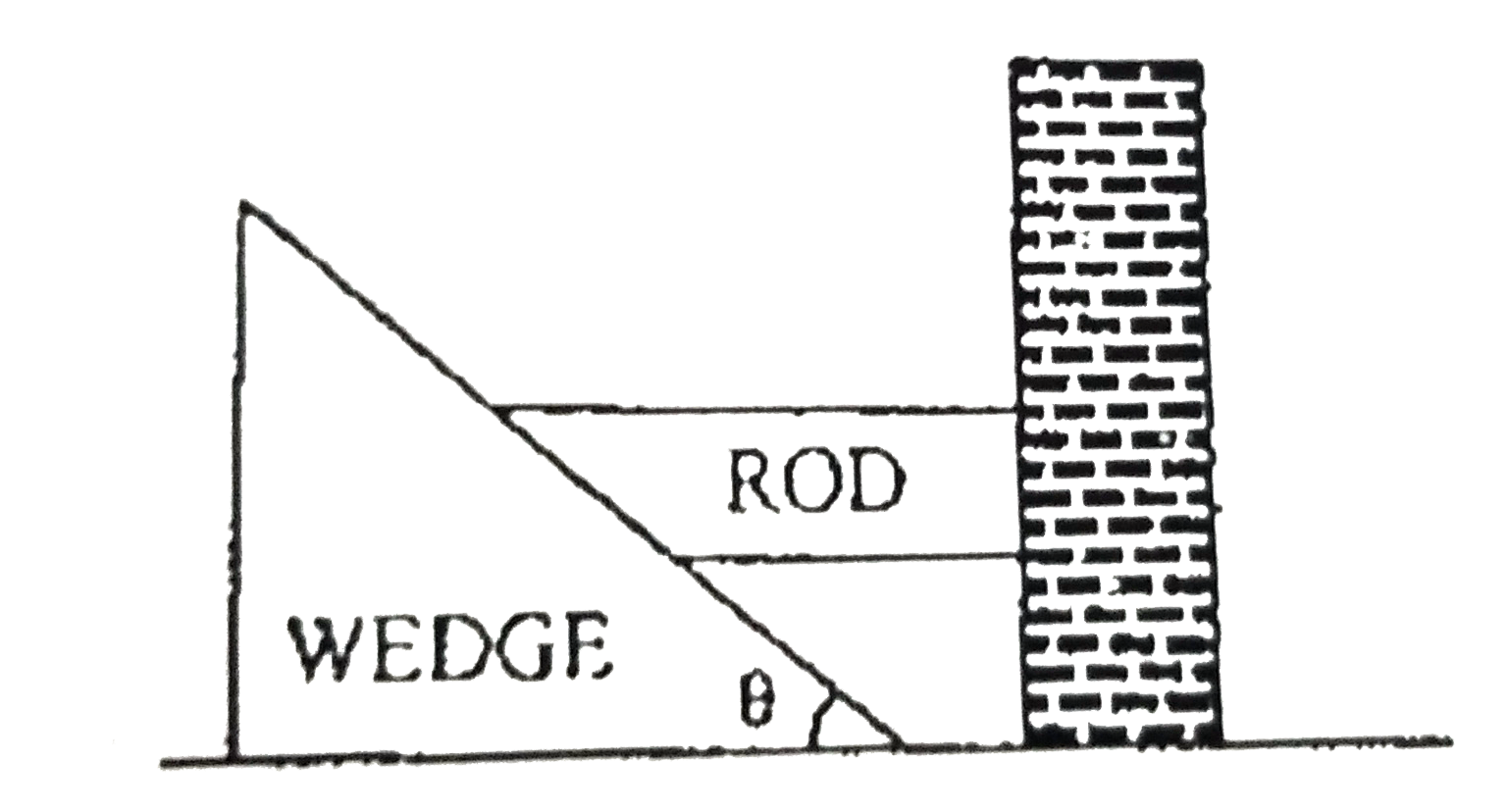A person (40 kg) is managing to be at rest between two verticle walls by pressing one wall A by hi hands and feet and the other wall B by his back figure. Assume that the friction coefficient between his body and the walls is 0.8 and that limiting friction acts at all the contacts. a. show that the person pushes the two walls with equal force. b. find the normal force exerted by either wall on the person Take .

Mass of man = 40 kg,
FrictioN/Al force developed between hands, legs and block side with the wall the weight of man. So he remains inequilibrium.
He gives equal force on both the walls so gets equal rectionR from both the walls. If he appies uneuqual forces R should be different the can't rest between the walls.
From the free body diagram

The normal force =250N
Topper's Solved these Questions
Similar Questions
A rock-climber (49 kg) is managing to be at rest between two vertical rocks pressing one rock A by his feet and the other B by his back . If the coefficient of friction between his shoes and wall is A 1.2 while between his back and wall B is 0.8 and limiting friction acts at all the contacts , then : (a) What is his push against the rock ? (b) What percent of the weight is supported by the frictional force an legs ?
 View Solution
View SolutionA man of mass 40kg is at rest between the walls as shown in the If '●' between the man and the walls is 0.8 find the normal reactions exerted by the walls on the man .
View Solution
Knowledge Check
- Question 1 - Select One or More
A box is accelerating with acceleration =20m/s2. A block of mas 10 kg placed inside the box and is in contact with the verticle wall as shown. The friction coefficient between the block and the wall is μ=0.6 and take g=10 m//s^(2)
 AThe acceleration of the block will be 20m/s2BThe friction force acting on the block will be 100 NCThe contact force between the verticle wall and the block will be 100√5 NDThe contact force between the verticle wall and the block is only electromegnetic in nature
AThe acceleration of the block will be 20m/s2BThe friction force acting on the block will be 100 NCThe contact force between the verticle wall and the block will be 100√5 NDThe contact force between the verticle wall and the block is only electromegnetic in nature - Question 2 - Select One
A block of mass 0.1 kg is held against a wall by applying a horizontal force of 5 N on the block. If the coefficient of friction between the block and the wall is 0.5, then the magnitude of the frictional force acting on the block is
A2.5 NB0.98 NC4.9 ND0.49 N - Question 3 - Select One or More

A man tries to remain in equilibrium by pushing with his hands and feet against two parallel walls. For equilibrium,Ahe must exert equal forces on the wallsBthe forces of friction at the two walls must be equalCfriction must be present on both wallsDthe coefficents of friction must be the same between both walls and the man
A block of mass 1kg is pressed against a wall by applying a horizontal force of 10N on the block. If the coefficient of friction between the block and the wall is 0.5 ,magnitude of the frictional force acting on the block is
View SolutionWhen a person walls on a rought surface, the frictional force exerted by the surface on the person is opposite to the direction of his motion.
View SolutionIn the diagram shown, friction is present only between therod and the wall. The mass of the rod is M and tht of the wedge is 3M. What is the minimum value of the coefficient of friction between the rod and the wall so that rod remains in the state of rest?
 View Solution
View SolutionA spherical ball is placed between a vertical wall and a movable inclined plane as shown. There is no friction between the wall and the ball, and no friction between the ball and the inclined plane. The coefficient of friction between the inclined plane and the ground is The system is in equilibrium.

The normal force exerted by the plane on the ball isView SolutionA block of mass 0.1 is held against a wall applying a horizontal force of 5N on block. If the coefficient of friction between the block and the wall is 0.5, the magnitude of the frictional force acting on the block is:
View Solution

